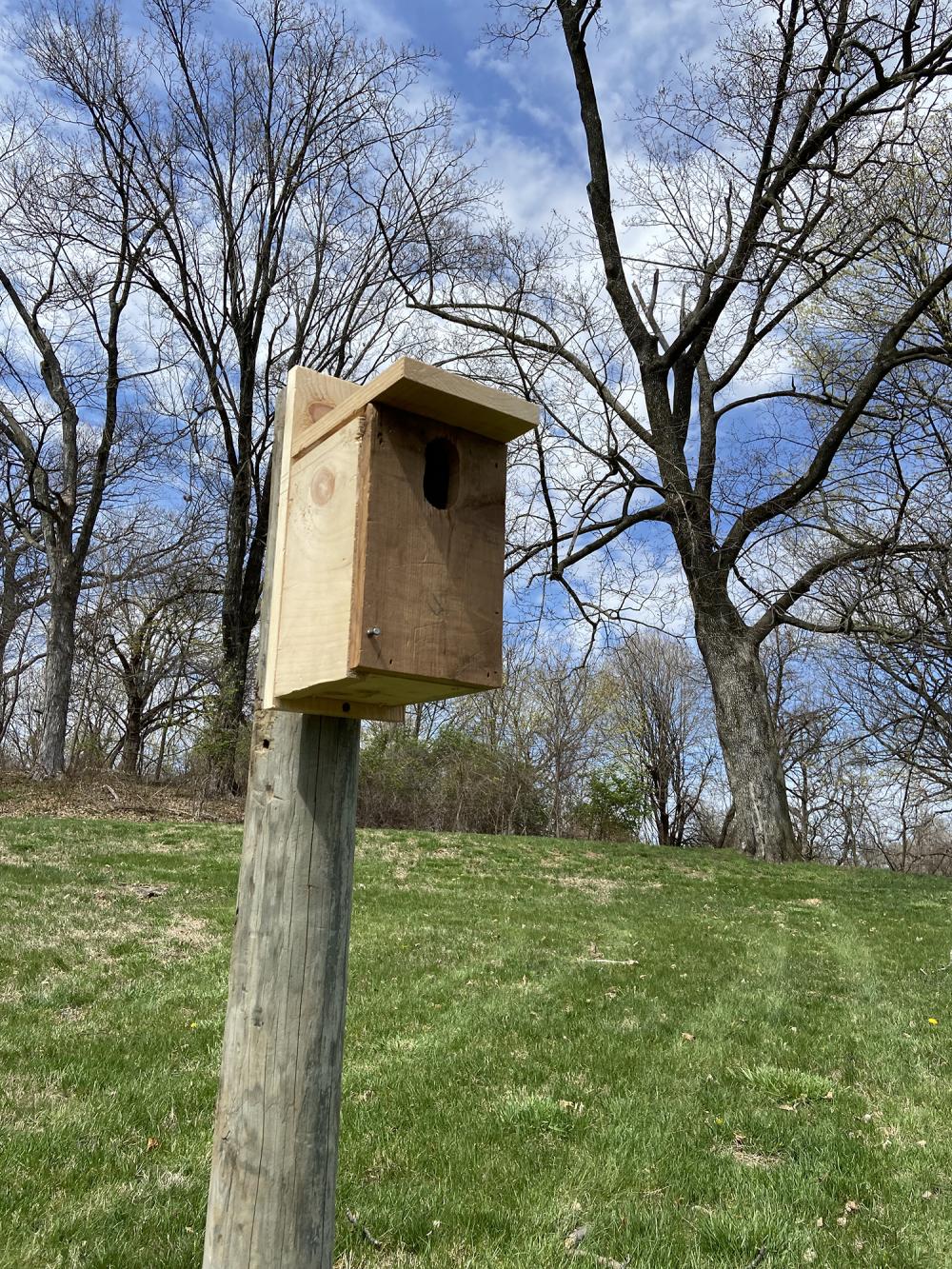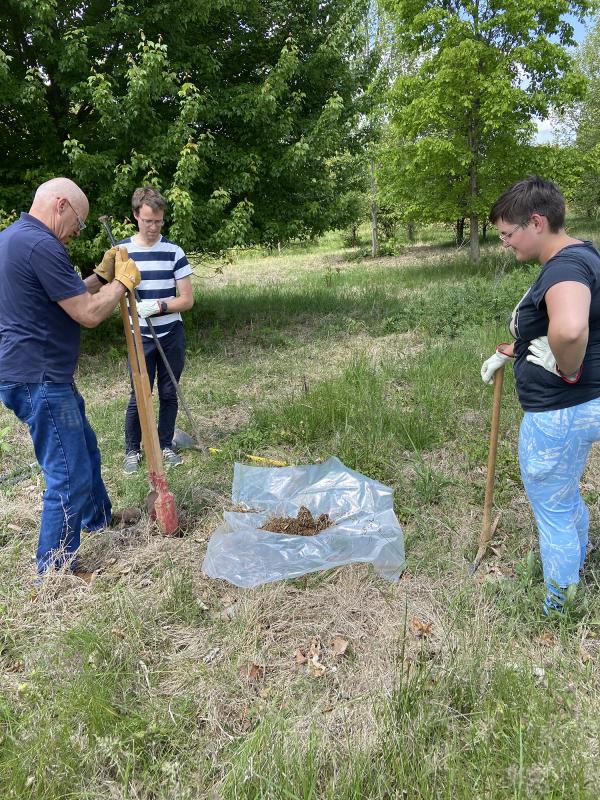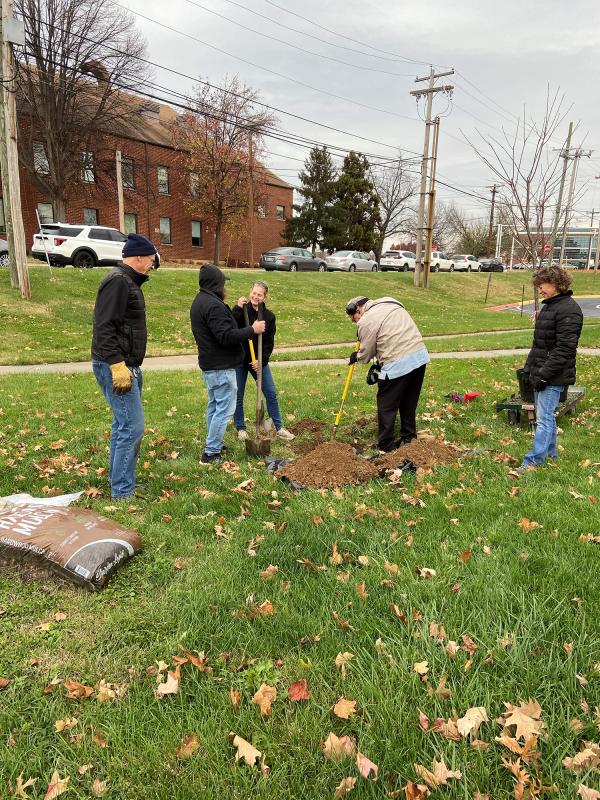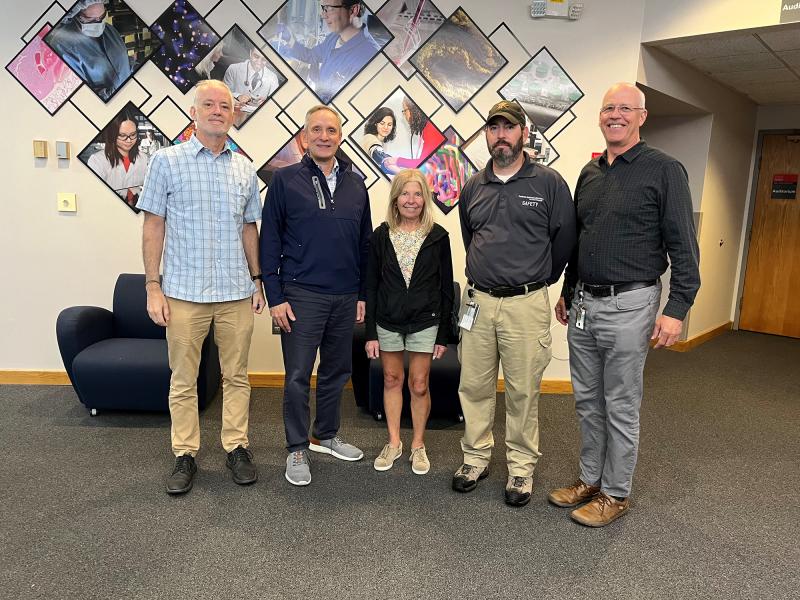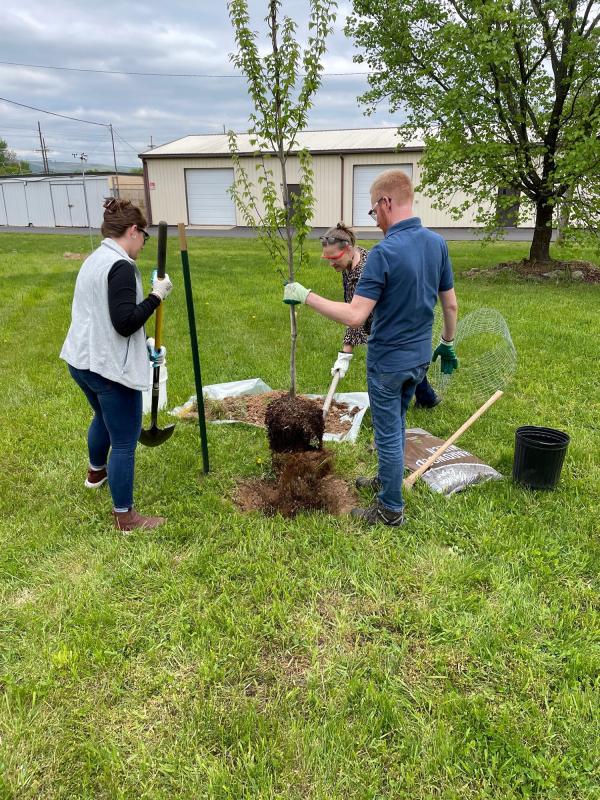It’s a beautiful autumn day as you walk around the NCI Frederick campus taking in the fall breeze. You can hear birds chirping in their birdhouses near the Old Farm Gate, newly planted trees swaying in the wind, and you can almost picture the bees that will be buzzing around the recently added pollinator garden.
This is the work of the Green Team Initiative—a diverse group of individuals working to make the campus more environmentally friendly. What makes this team unique is that any idea can be considered, from developing electric vehicle charging infrastructure to adding meatless dining options and building new birdhouses. Everyone sees sustainability differently, and the Green Team creates an inclusive space where anyone’s idea for making the campus increasingly eco-friendly can be considered.
All the projects they’ve done, no matter how small, have contributed to the bigger purpose of improving campus sustainability.
Different Paths Toward a Greener Campus
Most recently, the team installed birdhouses along the walking path near the Old Farm Gate. But they didn’t do this alone. The committee group partnered with a local Boy Scout troop, and both groups donated their time, supplies, and knowledge to build the birdhouses. The team also acquired permission from the Army to install them. Each birdhouse was made to fit the specific needs of different species around campus, and this spring, many of the birdhouses already had families inside them.
Thanks to the inclusive aspect of the initiative, those who had a passion for birds were able to collaborate with the Green Team, and not only bring their ideas to life, but also provide birds with a safe home on campus.
Even projects as simple as planting trees bring us one step closer to creating a greener campus. The team planted five trees for Arbor Day in 2022 and five more in the fall of that year. According to the U.S. Department of Agriculture, “one large tree can provide a day’s supply of oxygen for up to four people.” Not only that, but more trees also help to decrease stormwater runoff because tree canopies can intercept rainfall, reducing stormwater runoff and erosion. With 10 new trees planted, the Green Team has been instrumental in improving the environment around campus.
In 2023, in a different effort contributing to cleaner air, the team promoted the National Institute of Health (NIH) Freezer Challenge, which is part of the International Laboratory Freezer Challenge. This is an initiative aimed at reducing energy consumption and greenhouse gas emissions by optimizing freezers. The Green Team participated in the challenge by encouraging all laboratories to discard old samples, increase the freezer temperatures, complete a freezer defrost, share freezer space, retire unnecessary freezers, and much more. They contributed to participation numbers under NIH, which won the International Freezer Challenge and saved 2009 kilowatt-hours per day.
Working Together to Make a Difference
Each of the Green Team’s projects help make the campus more sustainable, and the best part is that anyone’s idea can become a reality and make an impact.
When new projects are discussed, “the team breaks down into committees and tries to make the ideas come to fruition,” said Green Team Coordinator Kylee Stenersen, a safety officer in the Environmental Health and Safety directorate.
Given that the Green Team focuses less on changing regulations and more on an environmentally friendly campus, it can be difficult to measure the success of the initiative. However, they know their efforts have been effective if they’ve done the work to acquire people, money, and approval, and successfully implemented the project.
As Stenersen said, “Every little thing is a win,” because each step of the process gets them one step closer to making the campus increasingly eco-friendly.
A crucial step of the process is funding, which can also come from various sources. For some projects such as tree planting, funding comes from the Environment, Health, and Safety Directorate or the Facilities, Maintenance, and Engineering Directorate; and for others such as the birdhouses, funding is solely based on donations.
Acting Today for a Better Tomorrow
This year, the team hopes to continue projects like their new pollinator garden and increase overall participation. The more people that get involved with the Green Team, the more projects can be implemented toward facilitating an eco-friendly campus.
Being a part of the Green Team Initiative is something anybody can do, and it’s more imperative now than ever that we work toward creating a sustainable environment.
Climate change has already had significant impacts on Maryland. According to the University of Maryland, the state has seen higher average temperatures, longer heatwaves, milder winters, and more intense storms and flooding. While the Green Team Initiative is not directly tackling these issues, its projects are key to making the campus more sustainable, which in turn reduces our emissions and puts less strain on the environment.
No idea is too big or too small for this team to handle, and they look forward to further improving the environment around us in any way possible.
To get involved with the Green Team Initiative or to provide feedback or suggestions, please contact FNLGreenTeam@nih.gov.
Mira Deni is a Werner H. Kirsten Intern in the Partnership Development Office (PDO) at the Frederick National Laboratory for Cancer Research (FNL). In her role, she writes articles, creates communications materials, researches partners/performance measures, and more. PDO establishes partnerships with FNL and industry, academia, and other research institutions.


